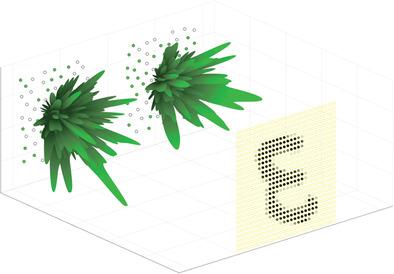Our official English website, www.x-mol.net, welcomes your
feedback! (Note: you will need to create a separate account there.)
Learned Integrated Sensing Pipeline: Reconfigurable Metasurface Transceivers as Trainable Physical Layer in an Artificial Neural Network.
Advanced Science ( IF 14.3 ) Pub Date : 2019-12-06 , DOI: 10.1002/advs.201901913 Philipp Del Hougne 1 , Mohammadreza F Imani 2 , Aaron V Diebold 2 , Roarke Horstmeyer 3 , David R Smith 2
Advanced Science ( IF 14.3 ) Pub Date : 2019-12-06 , DOI: 10.1002/advs.201901913 Philipp Del Hougne 1 , Mohammadreza F Imani 2 , Aaron V Diebold 2 , Roarke Horstmeyer 3 , David R Smith 2
Affiliation

|
The rapid proliferation of intelligent systems (e.g., fully autonomous vehicles) in today's society relies on sensors with low latency and computational effort. Yet current sensing systems ignore most available a priori knowledge, notably in the design of the hardware level, such that they fail to extract as much task-relevant information per measurement as possible. Here, a "learned integrated sensing pipeline" (LISP), including in an end-to-end fashion both physical and processing layers, is shown to enable joint learning of optimal measurement strategies and a matching processing algorithm, making use of a priori knowledge on task, scene, and measurement constraints. Numerical results demonstrate accuracy improvements around 15% for object recognition tasks with limited numbers of measurements, using dynamic metasurface apertures capable of transceiving programmable microwave patterns. Moreover, it is concluded that the optimal learned microwave patterns are nonintuitive, underlining the importance of the LISP paradigm in current sensorization trends.
中文翻译:

学习集成传感管道:可重构超表面收发器作为人工神经网络中的可训练物理层。
当今社会智能系统(例如全自动车辆)的快速普及依赖于低延迟和低计算量的传感器。然而,当前的传感系统忽略了大多数可用的先验知识,特别是在硬件级别的设计中,因此它们无法在每次测量中提取尽可能多的与任务相关的信息。在这里,“学习集成传感管道”(LISP),包括以端到端方式包括物理层和处理层,可以利用先验知识来联合学习最佳测量策略和匹配处理算法任务、场景和测量约束。数值结果表明,使用能够收发可编程微波模式的动态超表面孔径,测量次数有限的物体识别任务的准确度提高了约 15%。此外,得出的结论是,最佳学习微波模式并不直观,这强调了 LISP 范式在当前传感化趋势中的重要性。
更新日期:2019-12-06
中文翻译:

学习集成传感管道:可重构超表面收发器作为人工神经网络中的可训练物理层。
当今社会智能系统(例如全自动车辆)的快速普及依赖于低延迟和低计算量的传感器。然而,当前的传感系统忽略了大多数可用的先验知识,特别是在硬件级别的设计中,因此它们无法在每次测量中提取尽可能多的与任务相关的信息。在这里,“学习集成传感管道”(LISP),包括以端到端方式包括物理层和处理层,可以利用先验知识来联合学习最佳测量策略和匹配处理算法任务、场景和测量约束。数值结果表明,使用能够收发可编程微波模式的动态超表面孔径,测量次数有限的物体识别任务的准确度提高了约 15%。此外,得出的结论是,最佳学习微波模式并不直观,这强调了 LISP 范式在当前传感化趋势中的重要性。











































 京公网安备 11010802027423号
京公网安备 11010802027423号